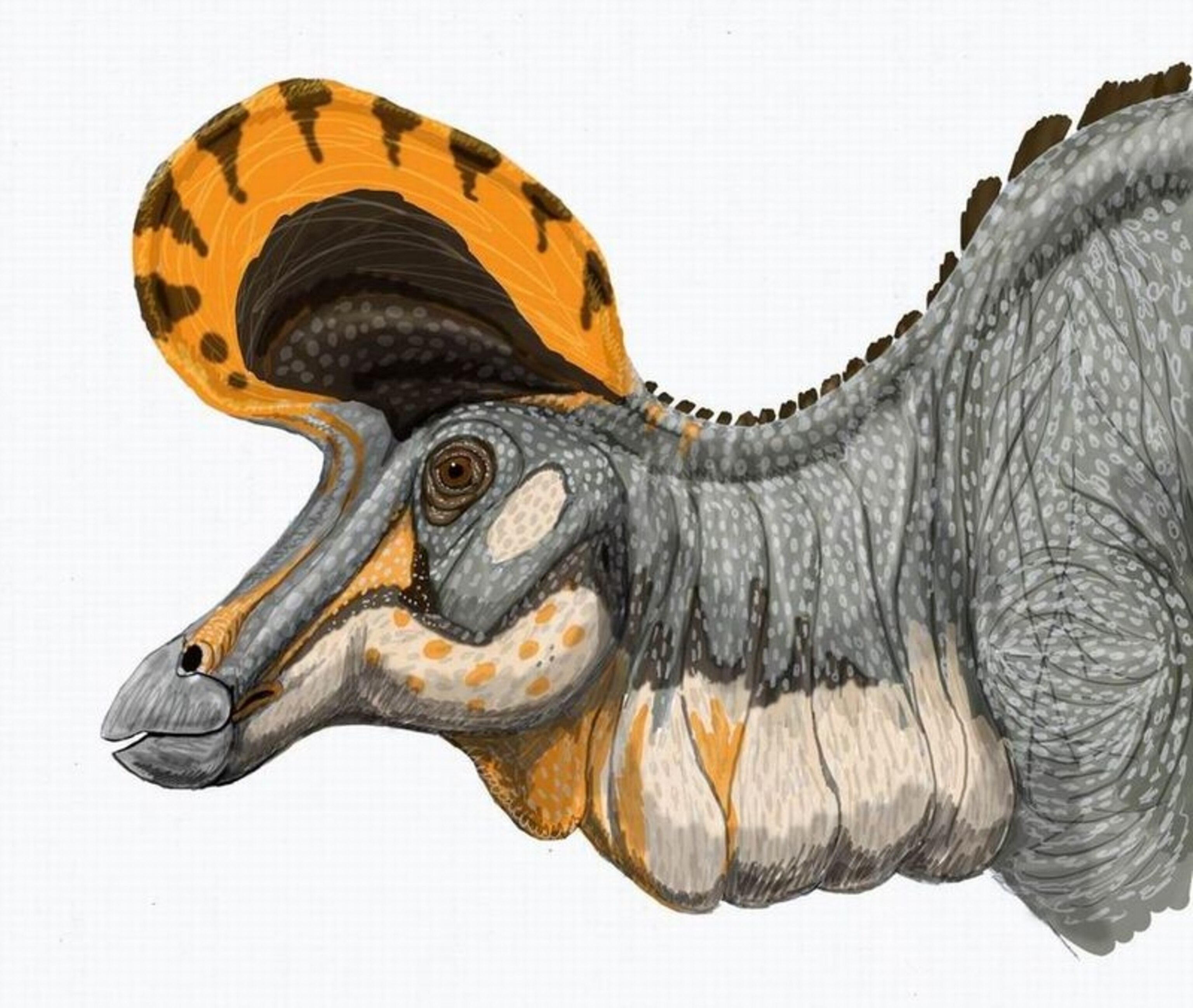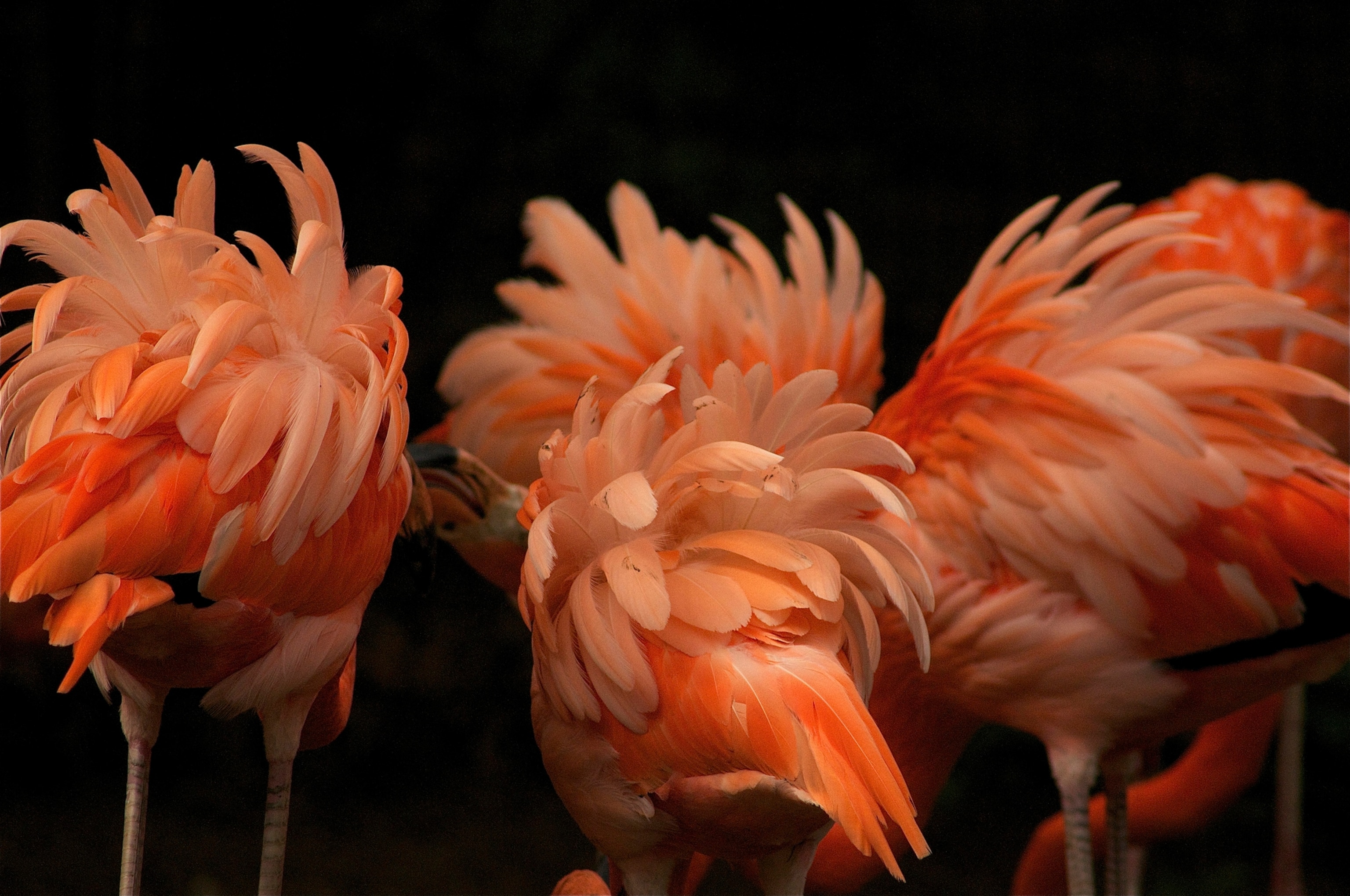Baby flamingos are fluffy and adorably awkward. But they’re not pink. The fuzzy infants start off as white or gray, only later earning a distinctive rosy hue. That’s because these beautifully dorky birds don’t make their own color, but co-opt it from their microscopic meals.
Flamingo pink is created by carotenoids – organic pigments present in the algae and tiny crustaceans flamingos sieve from the water. Rather than breaking down in the birds’ stomachs, though, the pigments enter the bloodstream and get sucked up into feathers as they form. How pink a flamingo is depends on what the bird is eating.
This biological borrowing isn’t unique to flamingos. Many other birds have carotenoid-created colors in shades of red, orange, yellow, pink, and purple. But when did such dazzlingly-daubed feathers evolve?
The fossil record is only of limited help here. Even though a surfeit of gorgeous fossils has shown that feathers go back deep into the dinosaur family tree – 160 million years at the very least – paleontologists have so far only been able to reconstruct the colors of preserved feathers on the basis of microscopic organelles called melanosomes. These itty bitty bodies are related to colors like black, gray, brown, and rust, but the brighter carotenoid colors left no such structural trace in prehistoric plumage. Nevertheless, by looking at modern birds a team of researchers has outlined when they expect carotenoids to have become an important part of the avian palette.
The first step was looking for how many modern birds have carotenoid-consistentcolors. This, as detailed in a new Proceedings of the Royal Society B study, involved a great deal of poring over plumage patterns.
Using the Hanbook of the Birds of the World and internet resources, Smithsonian scientist Daniel B. Thomas looked at image after image of 9,993 species of living birds for feather colors that could have been created by carotenoids. This wasn’t always straightforward. Ornithologists know that some birds – such as turacos, parrots, and penguins – have red, orange, or yellow feathers that aren’t actually created by carotenoids. Leaving out these possibly-confounding cases, Thomas eventually came up with a count of 2,956 bird species that could have carotenoid coloration.

To check if his identifications were on the mark, Thomas and colleagues ran a pair of tests on previously-collected bird feathers. A technique called high-performance liquid chromatography showed the presence of carotenoids based on light-absorption patterns, while another known as Raman spectroscopy gave away the pigments through spectral bands. Running these tests on feathers from every bird species wasn’t possible, but the scientists picked examples representing all known families of living bird to get an idea of how widely this form of coloration is spread. The researchers even investigated feathers of 124 bird species without apparent carotenoids, just to be sure that they weren’t missing any.
The researchers found that 95 of the 236 living bird families had species with carotenoid-created colors. That figure more than doubles the previous count, and suggests that the ability to express these brilliant pigments evolved multiple times through bird evolutionary history. And to find out when birds started wearing these particular colors, Thomas and coauthors traced the color patterns back through the A Global Phylogeny of Birds supertree.
Drawing backwards from modern species, Thomas and colleagues hypothesize that the first birds to have carotenoid-created colors lived around 56 million years ago. They were likely passeriforms, or “perching birds”, related to the majority of bird species living today. This is 94 million years after Archaeopteryx, the first bird. But even at it’s avian origin, carotenoid coloration wasn’t especially widespread. Gradually, as birds proliferated, more and more lineages independently evolved to use carotenoids in their plumage, with most carotenoid-carrying lineages evolving the ability after 23 million years ago. Starting at the Miocene, at least, avians have displayed a rainbow of colors comparable to the brilliant birds we see around us today.
So should we avoid coloring feathery, non-avian dinosaurs in pink and yellow? There isn’t yet any direct evidence for such color. A pink Triceratops or purple Brachiosaurus is entirely speculative. Then again, in addition to the many bird lineages that use carotenoids for their colors, there are lizards and snakes that evolved to do the same. If the transfer of carotenoids from food to feather or scale has happened so many times, then perhaps there were non-avian dinosaurs that were decked in red, orange, yellow, and purple. We just need to find a way to see what has been obscured through the lens of hundreds of millions of years.
[Top image from Flickr]
Reference:
Thomas, D., McGraw, K., Butler, M., Carrano, M., Madden, O., James, H. 2014. Ancient origins and multiple appearances of carotenoid-pigmented feathers in birds. Proceedings of the Royal Society B. 281: 20140806

